Address
304 North Cardinal
St. Dorchester Center, MA 02124
Work Hours
Monday to Friday: 7AM - 7PM
Weekend: 10AM - 5PM
Address
304 North Cardinal
St. Dorchester Center, MA 02124
Work Hours
Monday to Friday: 7AM - 7PM
Weekend: 10AM - 5PM
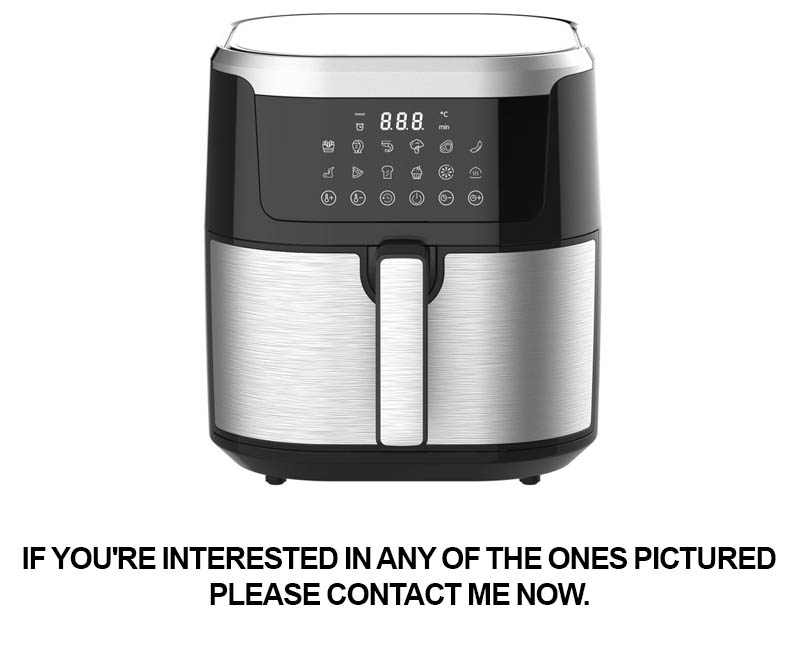
In the ever-evolving landscape of kitchen appliances, one product that has seen a surge in popularity is the sandwich press. With its compact design and ease of use, it’s no wonder that it has become a staple in many homes. This article delves into the innovative ideas shaping the future of sandwich presses, highlighting the latest industry trends and data that are driving this market forward. We’ll also explore the benefits of ODM (Original Design Manufacturing) and how it’s redefining convenience, as well as share testimonials and case studies from satisfied customers who have embraced these advancements. Join us as we uncover the secrets behind the success of the modern sandwich press.
The ODM sample service has revolutionized the way we approach product development, particularly in the kitchen appliance industry. This innovative approach has redefined convenience for both manufacturers and consumers, ensuring that every detail is meticulously crafted to meet the highest standards of quality and functionality.
By offering a customized ODM (Original Design Manufacturing) sample service, companies are able to bring their vision to life in a more efficient and cost-effective manner. This service involves collaborating closely with clients to create a unique prototype that aligns perfectly with their brand identity and market demands.
One of the key benefits of the ODM sample service is the ability to tailor the product design to the specific needs of the target market. Whether it’s a compact size for easy storage or a sleek design for modern kitchens, the sample service ensures that the final product resonates with the consumer’s expectations. This level of customization is not just about aesthetics; it’s about understanding the user experience and creating a product that stands out from the competition.
The process of creating an ODM sample begins with thorough market research and consumer feedback. This step is crucial in identifying trends and potential gaps in the market. By analyzing the latest data and consumer preferences, designers can develop a product that not only meets current needs but also anticipates future trends.
Once the concept is finalized, the engineering team dives into the technical details. They use advanced CAD (Computer-Aided Design) software to create a detailed digital model of the product. This model is then used to guide the manufacturing process, ensuring that the sample is as close to the final product as possible.
The prototyping phase is where the ODM sample service truly shines. It allows manufacturers to test the product’s functionality before mass production begins. This is particularly important for kitchen appliances like sandwich presses, where safety and ease of use are paramount. By creating a physical sample, engineers can identify and rectify any potential issues, such as heat distribution in the sandwich press or the ergonomics of the handles.
The sample service also offers a level of flexibility that traditional manufacturing methods cannot match. If a client wants to make changes to the design or add new features, the ODM service can quickly adapt to these changes, ensuring that the final product is exactly what the client envisions.
Moreover, the ODM sample service provides a platform for innovation. Designers can experiment with materials, shapes, and functionalities to create a product that is not only practical but also a joy to use. For example, a sandwich press with a non-stick coating, adjustable heat settings, or even a built-in timer could be developed through this service, offering consumers a superior product experience.
In terms of convenience, the ODM sample service streamlines the production process. Instead of going through multiple iterations and prototypes, clients can receive a high-quality sample in a relatively short period of time—often within 15 days. This rapid turnaround time is invaluable for businesses looking to launch new products quickly and stay ahead of the market curve.
The benefits of the ODM sample service extend beyond the product development phase. It also helps in marketing and sales. A well-designed sample can be used to create compelling marketing materials, giving potential customers a clear idea of what the final product will look like and how it will perform. This can significantly boost sales and customer trust.
In conclusion, the ODM sample service has redefined convenience in the kitchen appliance industry. It allows for personalized product development, rapid prototyping, and innovation, all while ensuring that the end product is a testament to quality and functionality. As the demand for high-quality, user-friendly kitchen appliances continues to grow, the ODM sample service will undoubtedly play a crucial role in shaping the future of the market.

The sandwich press market has seen a remarkable evolution over the years, transforming from a simple kitchen gadget to a staple in modern culinary adventures. Once a niche product, these appliances have now become an integral part of the kitchen, catering to a diverse range of tastes and preferences.
In the early days, sandwich presses were primarily seen as a quick and convenient way to cook sandwiches. However, as technology advanced and consumer demands grew, these devices have expanded their capabilities. Today, they come in various shapes, sizes, and functionalities, each designed to cater to specific needs.
The market has seen a surge in the demand for high-quality, durable sandwich presses. Consumers are no longer satisfied with just a basic appliance; they seek features like adjustable temperature controls, non-stick surfaces, and even customizable bread-toasting settings. This shift in consumer behavior has driven manufacturers to innovate and offer more sophisticated products.
One of the key trends in the sandwich press market is the emphasis on health and wellness. As more people become conscious of their dietary choices, there’s a growing interest in at-home cooking, which includes the ability to prepare sandwiches with fresh ingredients. This has led to the development of sandwich presses that can cook a variety of food items, not just sandwiches, such as paninis, wraps, and even grilled cheese.
The rise of gourmet sandwiches has also played a significant role in the market’s expansion. From artisanal shops to food trucks, the demand for unique and flavorful sandwiches has skyrocketed. This has prompted manufacturers to create sandwich presses that can handle the preparation of these gourmet offerings, often with features that ensure even cooking and perfect browning.
Another important factor in the sandwich press market is the influence of social media and influencer culture. The ease with which people can share their culinary creations has led to a surge in popularity for visually appealing sandwich presses. These devices not only help in making delicious sandwiches but also serve as a statement piece in one’s kitchen.
The market is also witnessing a trend towards versatility. Many consumers are looking for kitchen appliances that can do more than one thing. As a result, sandwich presses are being integrated with other cooking functions, such as toasting, grilling, and even flipping the sandwich for even cooking on both sides.
In terms of design, there’s a noticeable shift towards compact and sleek models that are not only functional but also aesthetically pleasing. These designs are often targeted at younger consumers who value both form and function in their kitchenware.
The global sandwich press market is also segmented by geography, with different regions showing varying preferences and demands. For instance, in North America and Europe, there’s a preference for high-end, premium sandwich presses, while in Asia, there’s a larger market for more affordable, yet efficient models.
Moreover, the market is not without its challenges. One of the biggest hurdles is the competition from other kitchen appliances that can perform similar functions, such as toasters and panini makers. To stay relevant, sandwich press manufacturers must continuously innovate and offer unique selling points.
Lastly, sustainability is becoming an increasingly important factor in the sandwich press market. Consumers are more likely to purchase products that are environmentally friendly, made from sustainable materials, and have a minimal carbon footprint. This has prompted manufacturers to explore eco-friendly options in their product development.
In conclusion, the sandwich press market has grown exponentially, driven by a combination of technological advancements, changing consumer preferences, and the rise of gourmet cuisine. As the market continues to evolve, it’s clear that sandwich presses will play a significant role in shaping the future of home cooking.
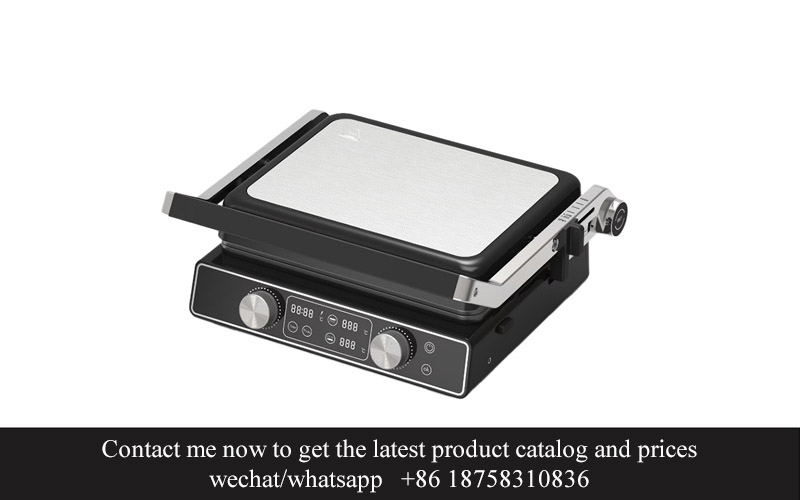
The 15 Days Sandwich Press has emerged as a game-changer in the kitchen appliances market, reshaping the way we think about convenience and culinary innovation. Its unique features and functionalities have not only captured the attention of consumers but have also set new standards for what a sandwich press can offer.
The press’s compact design is a standout feature. Measuring just a fraction of the size of traditional sandwich makers, it fits seamlessly into any kitchen setting, be it a small apartment or a bustling kitchen. Its portability is unmatched, allowing users to take their favorite meals on the go or even use it as a travel companion.
Functionality-wise, the 15 Days Sandwich Press goes beyond the basic task of pressing bread. It boasts advanced technology that ensures even heating, resulting in perfectly toasted sandwiches with a golden-brown crust. The press’s non-stick surfaces make it easy to clean, and its temperature control feature allows for customization, catering to a variety of dietary preferences and tastes.
Innovation isn’t just limited to the design and functionality of the press. The 15 Days Sandwich Press also incorporates smart features that make it a favorite among tech-savvy consumers. Its digital interface offers precise control over cooking times and temperatures, while the removable lid ensures that steam doesn’t escape during the cooking process, locking in flavors and textures.
The press’s versatility is another key aspect that sets it apart. It can be used to create not just sandwiches but also wraps, paninis, and even baked goods. The possibility of experimenting with different ingredients and fillings has opened up a world of culinary possibilities for users.
From an environmental standpoint, the 15 Days Sandwich Press is a step forward in sustainability. Its energy-efficient design consumes less power than traditional sandwich makers, contributing to a greener kitchen. Additionally, the press’s durability means it can withstand frequent use, reducing the need for frequent replacements.
The impact of the 15 Days Sandwich Press on the sandwich-making market is profound. It has sparked a wave of interest in the versatility of kitchen appliances and has encouraged manufacturers to think creatively about how they can enhance daily cooking experiences. Its success has also led to a rise in demand for similar compact, multi-functional appliances that can simplify meal preparation without compromising on quality.
Moreover, the 15 Days Sandwich Press has become a hit among health-conscious consumers. Its ability to cook food with minimal oil and fat has made it a preferred choice for those looking to maintain a balanced diet. The press’s even cooking ensures that each bite is flavorful and nutritious, making it an ideal kitchen tool for individuals seeking to control their food intake.
The game-changing nature of the 15 Days Sandwich Press extends beyond its immediate users. It has inspired a new wave of innovation in the kitchen appliances industry, with manufacturers looking to replicate its success with their own products. The press has shown that by focusing on user needs, design, and functionality, even the simplest of kitchen appliances can revolutionize how we approach mealtime.
In conclusion, the 15 Days Sandwich Press has redefined convenience in the sandwich press market. Its compact design, advanced functionality, smart features, versatility, environmental considerations, and health benefits have all contributed to its status as a game-changer. As the market continues to evolve, it’s clear that the 15 Days Sandwich Press has paved the way for a new era of kitchen appliances that are both innovative and practical.

In the ever-evolving world of product development, the concept of Original Design Manufacturing (ODM) has emerged as a game-changer for businesses seeking to innovate and differentiate themselves in the market. ODM offers a unique blend of design expertise, production capabilities, and customization that can revolutionize the way products are brought to life.
ODM is not just about creating a product; it’s about crafting a story. It’s the art of translating an idea into a tangible, market-ready solution that resonates with consumers. Let’s delve into the various aspects of ODM that make it such a powerful tool.
Design InnovationODM allows companies to tap into a pool of creative designers who specialize in understanding market trends and consumer needs. These designers bring fresh perspectives, pushing the boundaries of what’s possible and ensuring that the final product is not just functional but also aesthetically pleasing and innovative.
Customization for BrandsEvery brand has its identity, and ODM enables companies to create products that perfectly align with their brand values. From the color palette to the logo placement, every detail can be tailored to reflect the brand’s image, enhancing brand recognition and loyalty.
Reduced Time to MarketWhen you work with an ODM partner, you’re essentially cutting out the middleman. This streamlined process means faster development cycles, shorter lead times, and quicker time to market. It’s a crucial advantage in industries where being first can mean capturing a larger market share.
Cost EfficiencyODM can lead to significant cost savings. By managing the design and production under one roof, manufacturers can optimize the supply chain, reduce inventory costs, and eliminate the need for multiple suppliers. This efficiency translates into competitive pricing for the end consumer.
Quality ControlWith ODM, quality control is centralized and consistent. Since the manufacturer is responsible for the entire process, from design to production, they can maintain stringent quality standards throughout. This ensures that the final product meets or exceeds the brand’s expectations.
Global ReachODM partners often have a global footprint, which means they can source materials and components from around the world. This not only provides access to the best quality materials but also allows for cost-effective production in regions with lower labor costs.
Market AdaptabilityThe ability to quickly adapt to market changes is crucial for staying competitive. ODM allows for flexibility in design and production, enabling companies to respond swiftly to new trends, consumer feedback, and regulatory requirements.
Sustainability FocusIn today’s world, sustainability is a key consideration for consumers and businesses alike. ODM can incorporate sustainable practices into the design and production process, from eco-friendly materials to energy-efficient manufacturing methods.
ScalabilityWhether a company is launching a new product or scaling up an existing line, ODM offers the scalability needed to handle varying production volumes. This is particularly beneficial for startups and small to medium-sized enterprises (SMEs) looking to grow without overextending their resources.
Intellectual Property ProtectionODM partnerships often include clauses that protect the intellectual property of the brand. This ensures that the unique design and functionality of the product are safeguarded, preventing copycats from diluting the market.
Collaborative DevelopmentODM encourages a collaborative approach between the manufacturer and the brand. This collaboration fosters a deeper understanding of the brand’s vision and goals, leading to a more cohesive and successful product.
Continuous ImprovementODM providers are constantly seeking ways to improve their processes and products. This drive for continuous improvement ensures that the products they deliver are cutting-edge and remain relevant in a rapidly changing market.
In essence, the power of ODM lies in its ability to transform ideas into reality, offering a comprehensive solution that encompasses design, production, and market strategy. It’s a powerful tool that can give businesses a competitive edge in a crowded marketplace. By leveraging the strengths of ODM, companies can bring to life products that not only meet consumer expectations but also exceed them, ultimately leading to greater success and satisfaction.
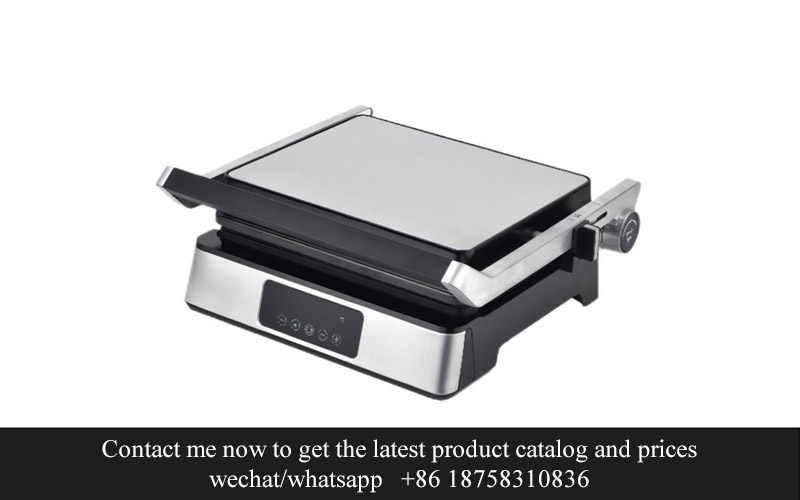
In the competitive world of business, finding the key to success can often feel like navigating through a maze. It’s not about a single breakthrough but rather a blend of strategies, insights, and relentless pursuit of excellence. Here are some elements that often play pivotal roles in shaping success:
Endless InnovationThe ability to innovate and bring new ideas to the table is crucial. Whether it’s a new product, service, or process, innovation can be the differentiator that sets a company apart. It’s about not just meeting customer needs but anticipating them and providing solutions that haven’t even been imagined yet.
Customer-Centric ApproachUnderstanding and focusing on the customer is fundamental. This means not just listening to their current problems but also empathizing with their future challenges. By building a product or service that aligns with the customer’s evolving needs and desires, a business can establish a strong, loyal customer base.
Strong LeadershipLeadership is often the backbone of success. A great leader inspires, motivates, and guides their team towards a common vision. They make tough decisions, maintain clear communication, and foster a culture of innovation and accountability.
Strategic PartnershipsForming strategic partnerships can be a game-changer. By collaborating with other companies, a business can access new markets, technologies, and resources. These partnerships can also lead to co-development opportunities, enhancing the value proposition of both entities.
Consistent QualityQuality is the foundation of trust. Whether it’s a product or a service, delivering consistent quality ensures customer satisfaction and loyalty. Quality should not be compromised, as it reflects the brand’s commitment to excellence.
Adaptability and FlexibilityThe business landscape is constantly changing, and the ability to adapt to these changes is vital. Being flexible in response to market shifts, technological advancements, and consumer preferences can keep a company relevant and competitive.
Continuous Learning and ImprovementSuccess is not a destination but a journey. Continuous learning and improvement are essential to staying ahead. This involves not just embracing new knowledge but also actively seeking feedback, analyzing performance, and making necessary adjustments.
Resilience in the Face of ChallengesEvery business faces challenges, but how they are handled can be the difference between success and failure. Resilience involves maintaining a positive outlook, staying focused on goals, and finding creative solutions to problems.
Financial ManagementEffective financial management is crucial for long-term success. This includes budgeting, forecasting, managing debt, and ensuring a healthy cash flow. Financial prudence allows a company to invest in growth, manage risks, and sustain operations.
Cultural Fit and Talent AcquisitionHiring the right people and creating a culture that aligns with the company’s values is key. A talented team with a strong cultural fit can drive innovation, boost productivity, and create a positive work environment.
Effective Marketing and BrandingA strong brand and effective marketing strategies can significantly impact a company’s success. It’s about creating a compelling narrative that resonates with the target audience and communicates the unique value proposition.
Ethical PracticesOperating ethically is not just about doing the right thing; it’s also about building trust with stakeholders. Ethical business practices can enhance reputation, foster long-term relationships, and contribute positively to society.
Networking and RelationshipsBuilding a strong network of contacts can open doors to new opportunities. Whether it’s through industry events, social media, or personal connections, relationships can lead to collaborations, referrals, and new business prospects.
Customer Service ExcellenceExceptional customer service can be a powerful differentiator. By ensuring customers have a positive experience from pre-purchase to after-sales, a company can create a loyal customer base and generate positive word-of-mouth.
Innovation in OperationsStreamlining operations and finding ways to do things more efficiently can lead to significant cost savings and improved productivity. Continuous improvement in operational processes can also lead to better products and services.
Focus on SustainabilityAs consumers become more environmentally conscious, businesses that prioritize sustainability can gain a competitive edge. Implementing green practices not only benefits the planet but also resonates with a growing segment of environmentally aware consumers.
In summary, the key to success is multifaceted. It’s about balancing innovation with customer focus, leveraging partnerships and quality, adapting to change, and building a strong foundation of ethical practices and relationships. Success is achieved by those who are not only willing to take risks but also willing to learn, adapt, and evolve.

The latest industry trends and data in the sector are reshaping the landscape, offering insights into consumer preferences and technological advancements. Here’s a glimpse into the evolving dynamics:
Smart Integration: The surge in smart home technology has led to a growing demand for kitchen appliances that can integrate with home automation systems. This includes features like voice control, Wi-Fi connectivity, and app-based monitoring, making kitchen appliances more user-friendly and efficient.
Energy Efficiency: With increasing environmental consciousness, there’s a significant shift towards energy-efficient appliances. Consumers are looking for products that not only save money on energy bills but also contribute to a greener planet. This trend is reflected in the use of LED lighting, energy-saving motors, and eco-friendly materials.
Health and Wellness: The health and wellness movement has spurred a demand for kitchen appliances that can cater to healthier cooking methods. Air fryers, slow cookers, and sous-vide machines are becoming more popular as they allow for healthier cooking options with less oil and more control over the cooking process.
Customization and Personalization: Consumers are seeking products that cater to their individual needs and preferences. This has led to a rise in customizable kitchen appliances, where users can select features and functionalities that align with their specific cooking habits and dietary requirements.
Connectivity and Data Analytics: The ability to connect kitchen appliances to the internet for data collection and analysis is becoming more prevalent. This data can provide valuable insights into usage patterns, maintenance schedules, and even suggest improvements or recipes based on cooking habits.
Design and Aesthetics: The kitchen is no longer just a functional space; it’s a place for entertainment and socializing. As such, the design and aesthetics of kitchen appliances are becoming increasingly important. Sleek lines, modern materials, and stylish finishes are all part of the appeal that can set a product apart from the competition.
Sustainability: Sustainability is a multifaceted trend that encompasses not only the energy efficiency of appliances but also the materials used in their construction. Recyclable materials, sustainable sourcing, and the reduction of waste in manufacturing processes are all factors that are gaining traction among consumers.
Miniaturization: There’s a trend towards smaller, compact appliances that can fit into smaller kitchens or serve as portable options for those with a more nomadic lifestyle. This includes countertop ovens, compact refrigerators, and single-serve coffee makers, all designed to offer convenience without sacrificing functionality.
Professionalization at Home: As professional-grade appliances become more accessible, consumers are embracing the ability to cook like a chef at home. High-end ranges, professional mixers, and high-powered blenders are becoming more common, reflecting a desire for high-quality cooking experiences.
Eco-Friendly Packaging: The packaging of kitchen appliances is also undergoing a transformation. Companies are looking for greener alternatives to traditional packaging materials, such as biodegradable plastics and recycled paper, to reduce their environmental impact.
User Experience: The overall user experience is being prioritized, with a focus on intuitive interfaces, easy-to-use controls, and seamless integration with other smart devices. This includes clear instructions, helpful guides, and intuitive interfaces that make kitchen appliances more accessible to all users.
The latest industry trends and data in the sector are a testament to the dynamic nature of consumer preferences and technological advancements. As these trends continue to evolve, it’s clear that innovation and adaptability will be key to success in this competitive market.

In the fast-paced world of kitchen appliances, the sandwich press market has seen a surge of innovation and consumer demand. Here’s a look at some of the current trends shaping this niche industry.
Bespoke Features and CustomizationConsumers are seeking appliances that not only perform well but also offer a touch of personalization. Sandwich presses are now available with a variety of features, such as adjustable heat settings, non-stick surfaces, and even customizable shapes for bread and fillings.
Smart Technology IntegrationThe integration of smart technology into kitchen appliances has become increasingly popular. Smart sandwich presses can connect to mobile devices, allowing users to control the cooking process remotely, monitor cooking times, and even receive notifications when the sandwich is ready.
Sustainability and Eco-Friendly MaterialsAs environmental concerns grow, the sandwich press market is responding with eco-friendly designs. From presses made with recycled materials to energy-efficient models, sustainable practices are becoming a key selling point.
Compact and Portable DesignsSpace is at a premium in many kitchens, leading to a demand for compact and portable sandwich presses. These compact models are perfect for small apartments, RVs, and even dorm rooms, offering the convenience of fresh, homemade sandwiches on the go.
Healthy Eating and Functional IngredientsThere’s a growing trend towards healthier eating habits, and the sandwich press market is catching on. New models are designed to accommodate healthier ingredients like whole grains, lean proteins, and fresh vegetables, encouraging consumers to make more nutritious choices.
Ergonomic and User-Friendly DesignThe focus on user experience is not limited to functionality; ergonomic design is also a key trend. Sandwich presses with intuitive controls, easy-to-clean surfaces, and non-slip bases are becoming more common, making the cooking process more enjoyable and less stressful.
MultifunctionalityAs kitchen appliances continue to evolve, multifunctionality is a significant trend. Many sandwich presses now come with additional features, such as panini pressing, crepe making, or even the ability to toast bread or reheat leftovers.
Gourmet and Customizable FillingsThe variety of fillings available for sandwiches has expanded, and with it, the need for presses that can handle more gourmet and complex recipes. Consumers are looking for presses that can accommodate a variety of fillings without compromising on taste or texture.
Innovative Heat DistributionHeat distribution is critical in sandwich pressing to ensure even cooking. The latest models are equipped with advanced heat distribution systems that prevent burning and ensure that every bite of the sandwich is perfectly cooked.
Social Media and Influencer EndorsementsThe influence of social media and influencer endorsements cannot be overstated. Many consumers are basing their purchase decisions on reviews and recommendations shared by trusted individuals online, which has a significant impact on the sandwich press market.
Health and Safety FeaturesWith the rise of health consciousness, safety features are becoming a priority. This includes materials that are free from harmful chemicals, safety locks to prevent accidental activation, and clear instructions for use.
Subscription-Based ModelsSimilar to other appliance categories, the sandwich press market is exploring subscription-based models. These models offer customers the latest technology and features without the need for a one-time large purchase, aligning with the subscription culture that has taken hold in many industries.
In conclusion, the sandwich press market is evolving rapidly, driven by consumer demand for innovation, personalization, and health-conscious choices. As the industry continues to adapt to these trends, we can expect to see even more exciting developments in the future.
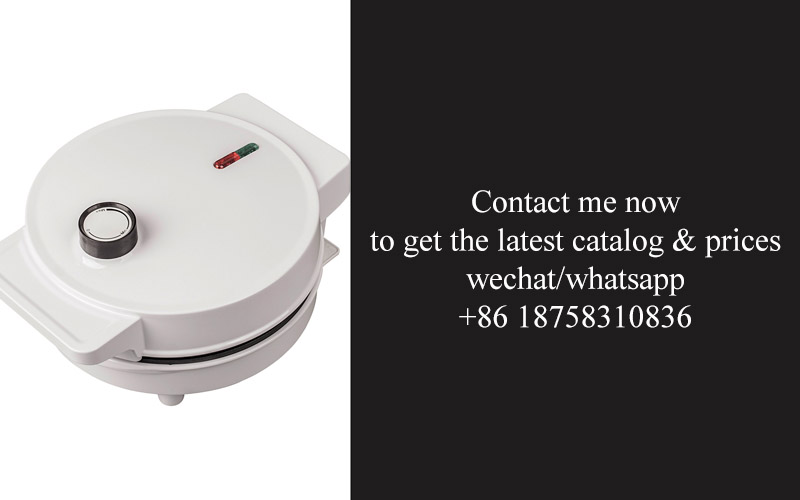
The world is evolving at a rapid pace, and innovation is the cornerstone of progress. In the realm of kitchen appliances, the sandwich press is no exception. Here are some innovative ideas that could shape the future of this market:
Smart ConnectivityIncorporating smart technology into sandwich presses can transform the way consumers interact with their appliances. Imagine a sandwich press that connects to your smartphone, allowing you to customize settings, monitor cooking progress, and even receive alerts when your sandwich is ready. This kind of integration with home automation systems could make the appliance a central part of a connected kitchen ecosystem.
Eco-Friendly MaterialsAs sustainability becomes a major concern for consumers, there’s a growing demand for eco-friendly appliances. Sandwich presses made from recycled materials, biodegradable components, or energy-efficient designs can tap into this market segment. By focusing on environmentally conscious materials and practices, manufacturers can cater to a niche that values both quality and ecological responsibility.
Health-Conscious FeaturesHealth has become a focal point in the kitchen, and the sandwich press is no different. Features like adjustable temperature controls for different types of bread and fillings, as well as programmable settings for specific cooking times, can cater to individuals with specific dietary needs. Moreover, non-stick coatings that are free from harmful chemicals can ensure that sandwiches are not only delicious but also safe to eat.
Versatile Multi-Functional PressesThe classic sandwich press has its charm, but there’s room for expansion. A multi-functional sandwich press that can also grill vegetables, toast bread, or even serve as a mini-grill for sandwiches could be a hit. This versatility would allow users to prepare a variety of food items with a single appliance, saving space and time in the kitchen.
Interactive Cooking GuidesIntegrating an interactive cooking guide into the sandwich press could provide users with step-by-step instructions for creating their perfect sandwich. This could be in the form of an LED display on the appliance itself or through a companion app. Users could select from a library of recipes, and the sandwich press would automatically adjust its settings to accommodate the chosen preparation.
Personalized Sandwich ProfilesTechnology has the power to tailor experiences to individual preferences. A sandwich press that learns from your usage patterns and cooking preferences could create personalized sandwich profiles. Over time, the appliance would suggest new combinations or even alert you when you have the ingredients for your favorite sandwich at home.
Integrated Food StorageImagine a sandwich press that comes with built-in storage solutions. A compartment designed to hold fresh ingredients, herbs, or a small loaf of bread could save space on your kitchen counter. This integrated approach to food storage and preparation could be a game-changer for busy individuals who value efficiency.
Customizable AestheticsWhile functionality is key, the aesthetic appeal of kitchen appliances shouldn’t be overlooked. Sandwich presses with customizable exteriors, such as changeable skins or wraps, could allow users to match their appliance to their kitchen decor or even express their personal style.
Energy-Saving InnovationsEfficiency is not just about energy consumption; it’s also about waste reduction. An energy-saving sandwich press could offer features like a power-saving mode that automatically turns off after a set period of inactivity, or an eco-friendly setting that reduces the cooking temperature without compromising on quality.
Social IntegrationFinally, there’s potential for sandwich presses to become social hubs in the kitchen. Features like a built-in camera that can capture and share sandwich-making moments on social media, or a platform for sharing recipes and sandwich-making tips with friends, could create a community around the appliance itself.
By embracing these innovative ideas, the sandwich press market could evolve beyond its traditional boundaries, offering consumers not just a tool for cooking, but a companion in the art of sandwich making.
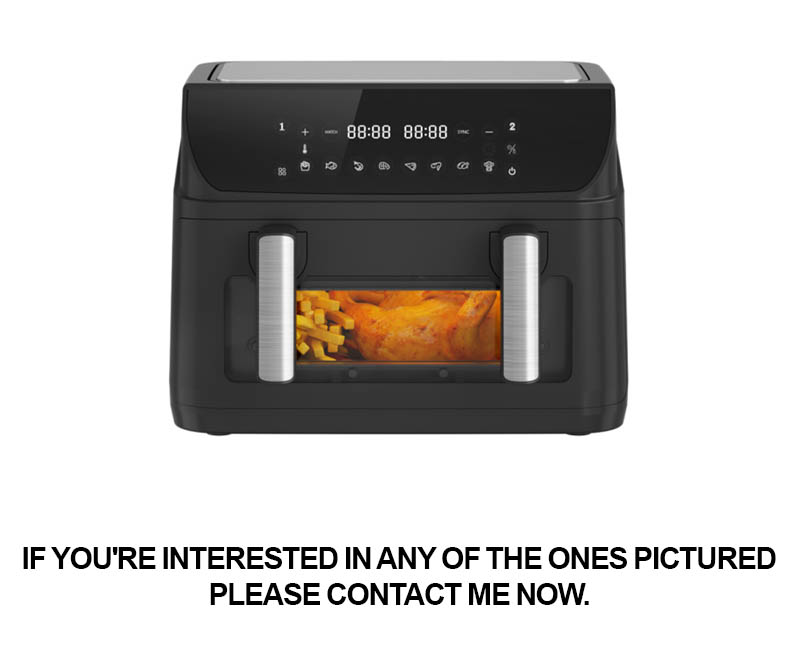
Navigating the intricacies of the ODM (Original Design Manufacturing) sample service process can be likened to a well-choreographed dance, where each step is crucial to the final performance. From conception to delivery, the journey is marked by precision, creativity, and a deep understanding of the market’s needs. Here’s an intimate look into the process that turns a concept into a tangible product.
Understanding the BriefThe process begins with a detailed brief that outlines the client’s vision, including specifications, target market, and desired features. This stage is crucial as it sets the foundation for the entire project, ensuring that the design team is aligned with the client’s expectations.
Sketching and ConceptualizationOnce the brief is clear, the design team delves into sketching and conceptualization. This phase involves brainstorming sessions where various ideas are sketched out on paper, exploring different angles and functionalities. It’s a creative free-for-all, where the boundaries of innovation are tested and pushed.
Prototype DevelopmentWith concepts in hand, the next step is to bring them to life through prototypes. This involves selecting materials and manufacturing processes that best suit the product’s design and functionality. Prototypes are often a series of iterations, each refining the design to address any potential issues before moving forward.
Material SelectionChoosing the right materials is a critical part of the ODM sample service process. The materials must not only be cost-effective but also durable and safe for the end-user. This involves extensive research and testing to ensure that the materials meet industry standards and the client’s quality requirements.
Mechanical Engineering and AssemblyThe mechanical engineering aspect involves designing the internal components that make the product function. This includes the mechanics of the sandwich press, such as the heating elements, pressure mechanisms, and any moving parts. Once the design is finalized, these components are assembled to form the working prototype.
Testing and Quality ControlBefore the product is deemed ready for the client, it must undergo rigorous testing. This includes functional testing to ensure that all features work as intended, as well as safety testing to comply with local and international standards. Quality control checks are conducted at every stage to maintain consistency and excellence.
Client Feedback and IterationOnce the initial prototype is ready, it is presented to the client for feedback. This is a collaborative phase where the client’s input is invaluable in shaping the final product. Based on this feedback, the design team may make adjustments and create a revised prototype, repeating this process until the client is satisfied.
Final Production ReadinessOnce the final design is approved, the focus shifts to mass production. This involves scaling up the manufacturing process, ensuring that the production line is optimized for efficiency and quality. The design team works closely with the production team to ensure that the product is manufactured to the same high standards as the prototypes.
Packaging and ShippingThe final touches are given to the product with packaging design that not only protects the item during transit but also enhances its market appeal. Once packaged, the products are shipped to the client, ready for distribution or further customization.
Post-Production SupportThe ODM sample service doesn’t end with shipping. The design team often provides post-production support, offering assistance with any issues that may arise. This ongoing relationship ensures that the client feels supported throughout the lifecycle of the product.
In essence, the ODM sample service process is a meticulous and collaborative journey that transforms a simple idea into a market-ready product. It’s a testament to the power of design, engineering, and a client-centric approach that values every detail and iteration along the way.
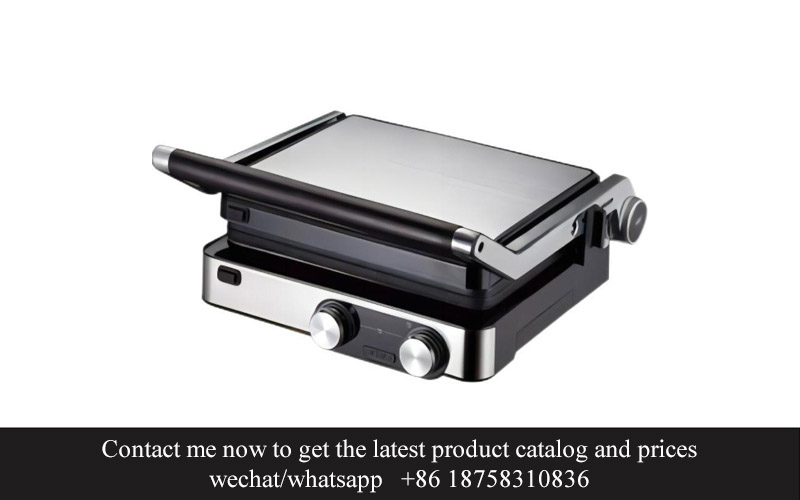
In the world of product development, testimonials and case studies serve as powerful tools that can showcase the effectiveness and quality of a product or service. They provide real-life examples of how customers have benefited, offering potential clients or investors insight into the value that a product can bring. Here’s a detailed look into the significance of testimonials and case studies:
Customers Share Their Experiences
Customers often have a unique perspective on the products they use. Testimonials allow these individuals to share their personal experiences, highlighting both the positive and negative aspects of a product. For instance, a customer might rave about the ease of use of a new kitchen appliance, while another might express disappointment with its durability. These varied perspectives can be incredibly valuable for potential buyers, as they offer a balanced view of what to expect.
Real-World Success Stories
Case studies take testimonials a step further by providing a narrative of how a product or service has been applied in real-world scenarios. They often include detailed accounts of challenges faced, the strategies employed to overcome those challenges, and the outcomes achieved. For example, a case study on a business software solution might detail how a company used the software to streamline its operations, leading to increased productivity and cost savings.
Building Trust and Credibility
One of the primary functions of testimonials and case studies is to build trust and credibility. When potential clients see that others have had positive experiences with a product, it can significantly influence their decision to try it themselves. This is particularly true in industries where trust is paramount, such as healthcare, finance, and technology.
Diverse Perspectives from Various Industries
Testimonials and case studies can come from a wide range of industries, offering a diverse array of examples. For instance, a testimonial from a small business owner using a cloud-based accounting service can provide insights into the benefits of such technology for other small businesses. Similarly, a case study on a healthcare provider utilizing a new medical device can be a beacon of hope for patients and healthcare professionals alike.
The Role of Social Proof
Social proof is a psychological phenomenon where people copy the actions of others to guide their own behavior. Testimonials and case studies play a crucial role in leveraging social proof. When potential customers see that others have had successful experiences with a product, they are more likely to believe that they will too, especially if those testimonials are relatable and share common pain points.
Showcasing Innovation and Differentiation
In a crowded market, showcasing innovation and differentiation is key. Testimonials and case studies can highlight how a product stands out from its competitors. For example, a testimonial from a satisfied user of a cutting-edge smart home system might emphasize the unique features that set it apart from other similar products.
Enhancing SEO and Online Visibility
Testimonials and case studies can also enhance a company’s online presence. By featuring these stories on a website or in online marketing materials, businesses can improve their search engine optimization (SEO) and attract more visitors. High-quality, engaging content like these can also be shared on social media platforms, further boosting visibility.
Customer Feedback and Continuous Improvement
Testimonials and case studies are not just about showcasing past successes; they also provide valuable feedback that can inform future product development. By listening to what customers have to say, companies can identify areas for improvement and continue to refine their offerings.
Closing the Sale
Ultimately, testimonials and case studies can be the deciding factor in closing a sale. They provide potential customers with the confidence to make a purchase, knowing that others have had positive experiences with the product or service. This can be especially influential in B2B sales, where trust and proof of a product’s effectiveness are crucial.
In conclusion, testimonials and case studies are powerful assets in the marketing and sales toolkit. They offer a glimpse into the real-world experiences of customers, build trust and credibility, and can significantly impact the decision-making process of potential clients. By leveraging these tools effectively, businesses can showcase their value and continue to grow their customer base.
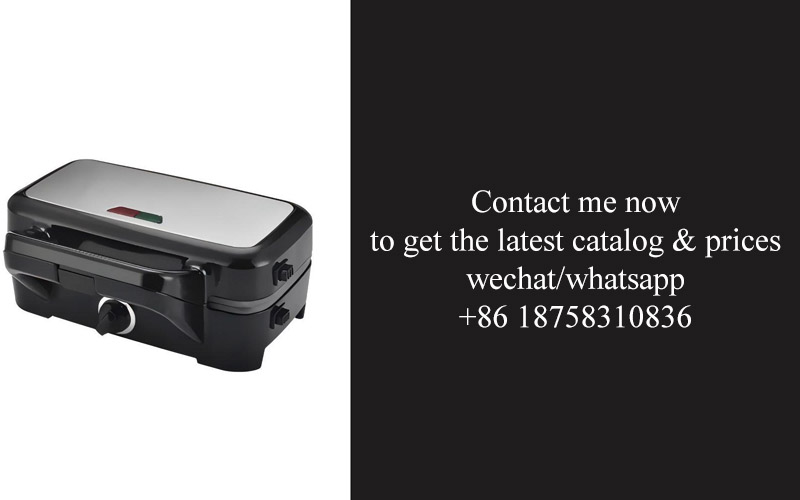
In the world of innovation and product development, the journey from concept to market can be a complex and intricate process. Throughout this voyage, the stories of those who have navigated these waters can offer invaluable insights and inspiration. Here are a few testimonials and case studies that highlight the experiences of companies and individuals who have embraced the ODM (Original Design Manufacturing) process, showcasing the triumphs and challenges they’ve encountered along the way.
A company known for its commitment to sustainability shared their story of how partnering with an ODM for a line of eco-friendly kitchen appliances transformed their brand. The CEO expressed that the collaboration allowed them to focus on their core competencies while the ODM team handled the intricacies of design and manufacturing. This strategic move resulted in a product line that not only met their environmental standards but also exceeded customer expectations.
A startup in the tech industry was at a crossroads when they decided to invest in an ODM sample service for their revolutionary fitness tracker. The founder recounted how the initial samples were crucial in securing funding from investors. The detailed reports and prototypes provided by the ODM service helped them to visualize the potential of their product, leading to a successful crowdfunding campaign.
One of the world’s largest appliance manufacturers spoke of their experience with an ODM for a new line of smart kitchen gadgets. The director of product development mentioned that the ODM’s ability to quickly adapt to design changes and incorporate new technologies was key to keeping the company competitive. The ODM’s agility in responding to market demands was evident in the timely delivery of the final products.
A small business owner, who specializes in handcrafted furniture, found that the ODM sample service was the bridge they needed to transition from local to international markets. The testimonials from their new international clients highlighted the quality and uniqueness of their products, which were meticulously crafted by the ODM team.
An entrepreneur in the food service industry shared their journey of creating a line of gourmet coffee makers. The ODM sample service played a pivotal role in refining the design and functionality of their product. The entrepreneur praised the ODM for their attention to detail and their willingness to iterate on the design until it was perfect, which ultimately led to a product that coffee aficionados have come to love.
A large corporation that specializes in medical devices discussed their collaboration with an ODM for a line of wearable health monitors. The vice president of research and development emphasized the importance of the ODM’s expertise in medical-grade materials and manufacturing processes. This partnership allowed the company to bring a high-quality product to market faster and with fewer internal resources.
A case study from a global retail giant revealed how an ODM sample service helped them launch a new line of home decor items. The head of product development noted that the ODM’s ability to understand the brand’s aesthetic and translate it into tangible products was a game-changer. The result was a collection that resonated with their customers and boosted sales across multiple regions.
These testimonials and case studies paint a picture of the diverse ways in which ODM sample services can impact businesses. From startups looking to break into new markets to established companies aiming to stay ahead of the curve, the ODM process has proven to be a versatile tool for success. It’s a testament to the power of collaboration and the importance of innovation in a rapidly changing world.